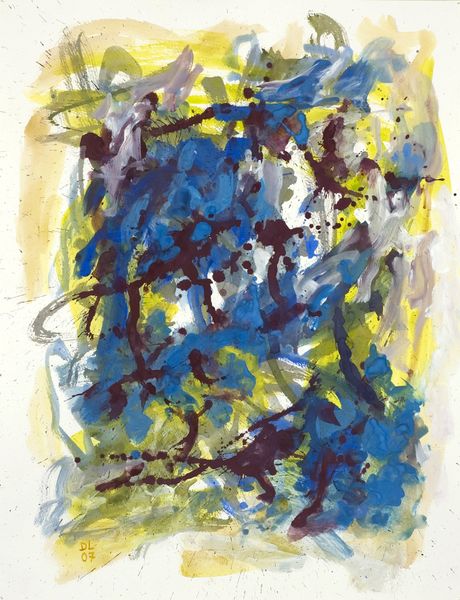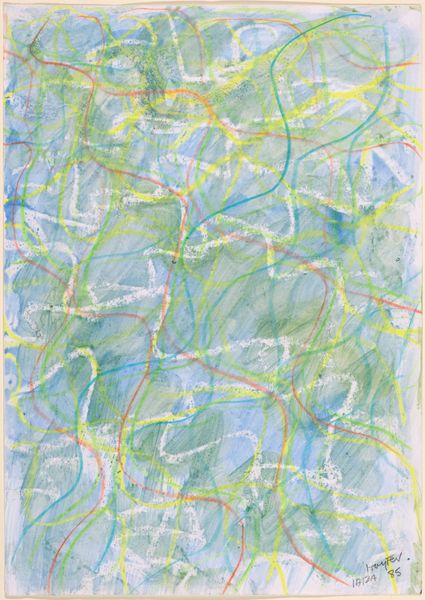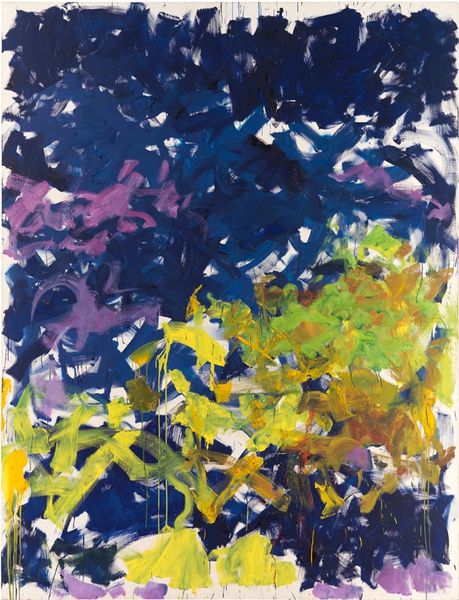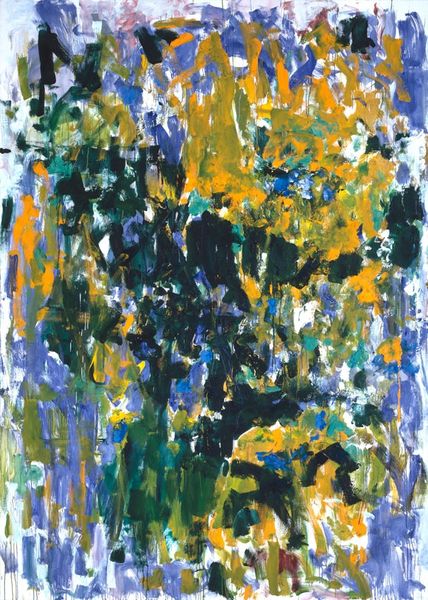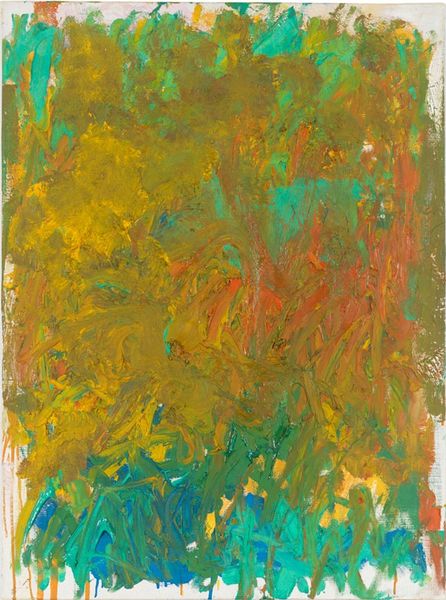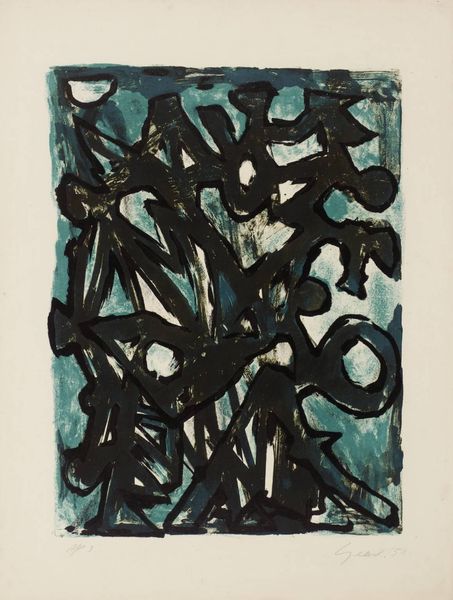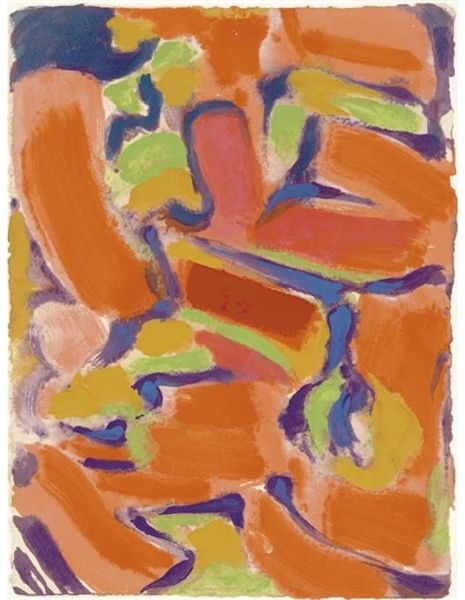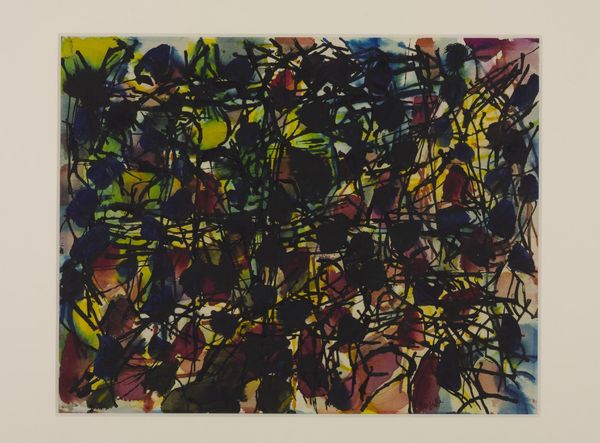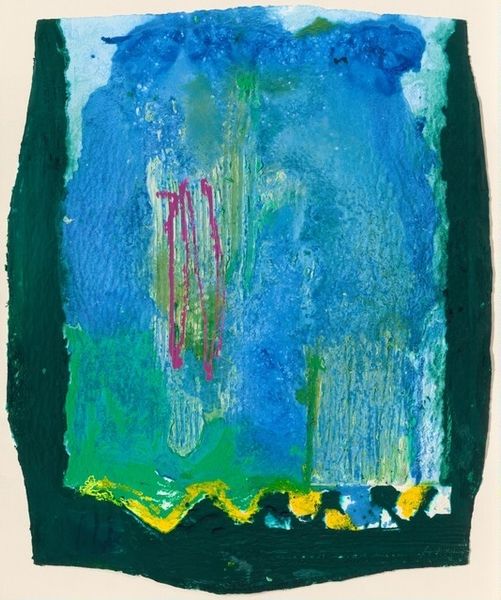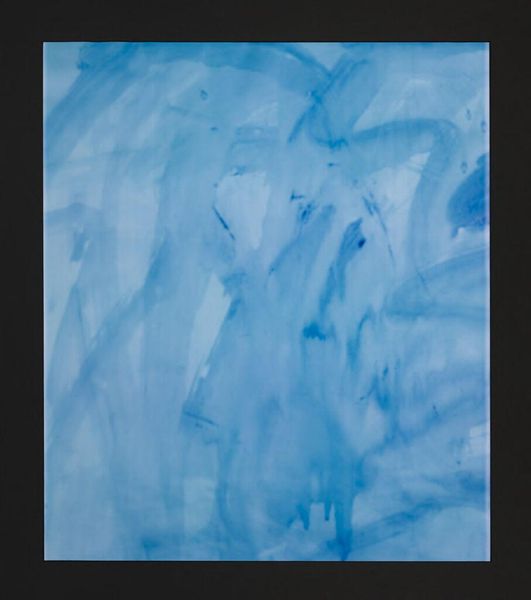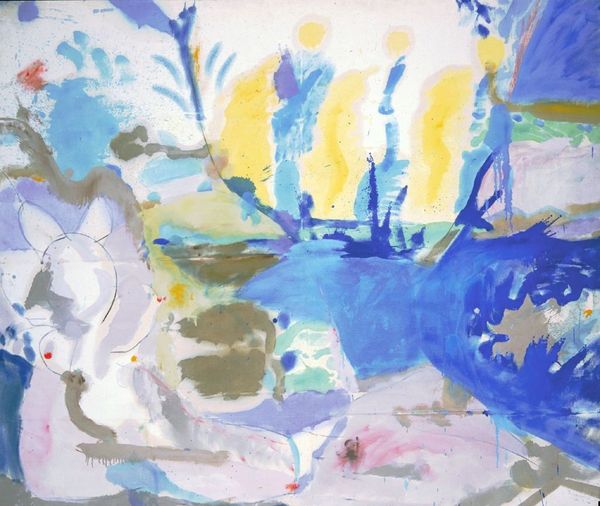
painting, watercolor
#
abstract-expressionism
#
abstract expressionism
#
abstract painting
#
painting
#
form
#
watercolor
#
geometric
#
abstraction
#
line
Copyright: Beauford Delaney,Fair Use
Curator: What a lively splash of color. Beauford Delaney’s 1961 watercolor, titled *Athens*, vibrates with energy. The interplay of blues and yellows creates a dynamic and almost dizzying visual field. Editor: Absolutely, I find it visually overwhelming, almost frantic. There’s an instability in the composition that makes it hard to find a resting point. The blue slashes across the yellow seem to be struggling to contain something. What narrative threads can we trace through this piece? Curator: Well, given the title, *Athens*, and the date, 1961, it’s crucial to understand the historical context of Cold War anxiety and Delaney's position as a Black expatriate artist living in Paris. He moved to Paris in 1953, driven by a desire for artistic freedom and escape from the racial prejudice he faced in the United States. The painting might be interpreted as an exploration of fractured identity and the tension between personal liberation and political unease. The color choices, the vibrancy bordering on chaos—these become significant. Editor: Interesting to consider the fractured identity through abstraction, given how tied portraiture of Black subjects is to questions of visibility and representation. And to your point about the Cold War, does the energetic abstraction also function as a rejection of the more rigid artistic expectations perhaps found on either side of the ideological divide? I also find the geometric shapes battling it out. Is there some inherent structural power at play? Curator: That’s insightful. He moves past representation to a deeper exploration of feeling and being. The lines and forms resist containment. The very act of painting this way becomes a form of defiance, asserting artistic freedom in a world increasingly defined by binaries and limitations. There is almost something to be said about queer theory being present within this artwork too, just without directly mentioning that in a specific manner. Editor: It truly embodies that period’s artistic search for subjective truth. The materiality, the looseness of watercolor – so different from the solidity often associated with institutional power. Perhaps it’s a conscious choice, and ultimately reflects not just freedom of expression but also his individual resistance. Curator: Looking closely has revealed that the seemingly chaotic energy translates into carefully planned rebellion, expressed through colour, form, and artistic identity. Editor: Indeed. What felt initially like frantic instability now feels more like carefully expressed freedom, highlighting Delaney’s unique experience during a turbulent period.
Comments
No comments
Be the first to comment and join the conversation on the ultimate creative platform.
